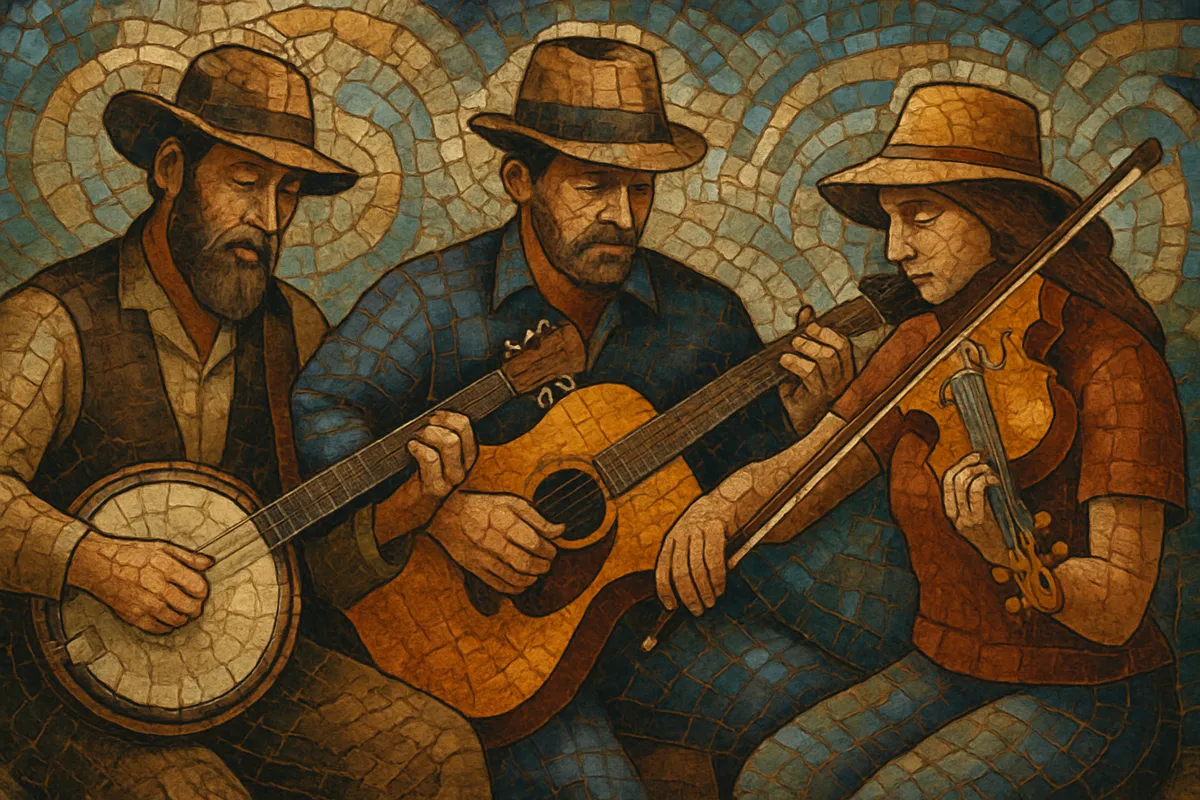Bluegrass is a high-energy, acoustic string‑band music that emerged in the Appalachian South during the 1940s, crystallized by Bill Monroe and his Blue Grass Boys. It is defined by brisk tempos, virtuosic instrumental breaks, and tight, close‑harmony singing often described as the "high lonesome" sound.
Typical instrumentation features five‑string banjo (often in Earl Scruggs’ three‑finger style), mandolin (with percussive off‑beat "chop" chords), steel‑string guitar (flatpicking), fiddle, and upright bass; the dobro (resonator guitar) is common, while drums are traditionally absent. Repertoire mixes traditional ballads, fiddle tunes, gospel quartets, and original songs, all delivered with driving rhythm and improvisatory flair.
Bluegrass coalesced in the United States in the 1940s around mandolinist Bill Monroe and His Blue Grass Boys. The watershed moment came in 1945 when banjo innovator Earl Scruggs and guitarist Lester Flatt joined Monroe, bringing the three‑finger banjo style, driving rhythm, and trio harmonies that defined the sound. Early classics like "Blue Grass Breakdown" and "Molly and Tenbrooks" set the template: fast tempos, instrumental breaks, and the "high lonesome" lead with tenor harmonies.
The first generation—Flatt & Scruggs, The Stanley Brothers, The Osborne Brothers, Jim & Jesse, and others—expanded the repertoire and refined ensemble roles. The dobro rose in prominence via Josh Graves. Bluegrass gained wider attention through radio, the Grand Ole Opry, and film/TV placements (notably "Foggy Mountain Breakdown" in Bonnie and Clyde). The modern festival circuit began in the mid‑1960s (e.g., Carlton Haney’s Fincastle festival), fostering a dedicated fan base and codifying performance practice.
A progressive wing—often called "newgrass"—embraced extended improvisation, new harmonies, and broader song sources. Key figures included New Grass Revival (Sam Bush), The Seldom Scene, The Country Gentlemen, Tony Rice, and David Grisman. Some groups added electric instruments or drums, while many retained acoustic timbres but stretched harmony and form. Meanwhile, traditionalists continued to champion the classic approach on the burgeoning festival and recording scenes.
The 1990s and 2000s saw renewed mainstream attention (e.g., the O Brother, Where Art Thou? soundtrack), and the rise of crossover artists like Alison Krauss & Union Station and Ricky Skaggs. Substyles flourished—traditional, progressive, bluegrass gospel, and jamgrass—and institutional support solidified (IBMA awards, academies, camps). Today, bluegrass is global, with bands worldwide blending the core aesthetic—acoustic drive, virtuosity, and tight harmonies—with local traditions and modern songwriting.


